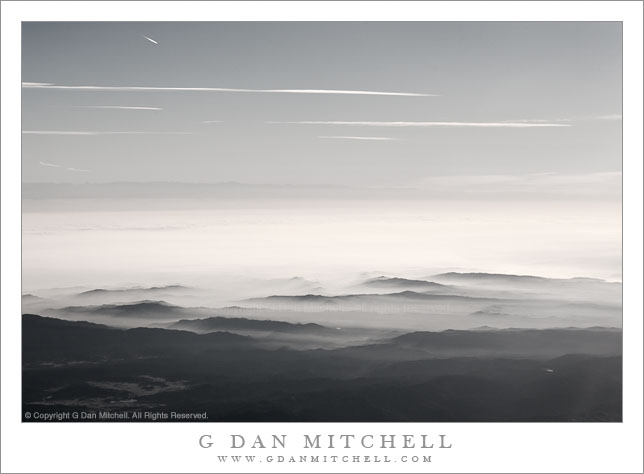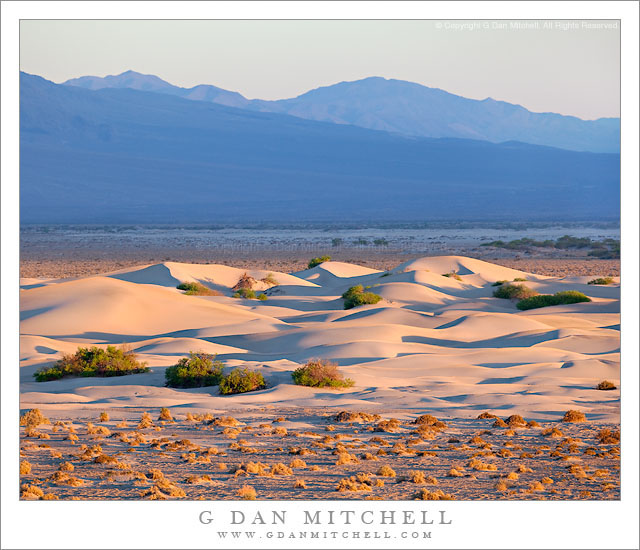Trees, Granite, and Afternoon Haze. Yosemite National Park, California. September 16, 2011. © Copyright 2011 G Dan Mitchell – all rights reserved.
Late afternoon sun back-lights haze around trees growing on granite domes along the Tuolumne River, Yosemite National Park.
I’m a big fan of shooting almost straight into the sun, especially when haze is involved and even more so when backlit trees can be the subject. This photograph was made in essentially these very backlit conditions, with the direct sun just a bit above and to the side of the scene. I liked the way that the near tree’s branches had more presence in front of the haze-faded low contrast background of the nearby ridge with trees and the further ridge fading into the bright haze.
I posted a slightly different version of this scene last week – one in which I had placed the tree almost directly in the center of the frame. Although some will cite some “rule of composition” to disallow that sort of composition, I think that the rules don’t make a lot of sense if your way of applying them is to simply follow them slavishly. I consider them to be more like “observations about composition” than rules of composition. It isn’t that placing a subject in the center of the frame is wrong, it is just that doing so can have a very different effect than putting it along an edge, one-third of the way in from a corner, at the bottom or top of the frame, and so forth. It is more important to get a sense – either intuitive or analytical – of the effects might be of these different placement options. In any case, I liked the centered composition of the other version – centered compositions can have a certain kind of calm strength, and the centering perhaps focused a bit more attention on the tree and a bit less on the background.
At the same time, I like this more “tradition” composition that places the tree a bit off-center to the right side of the frame. In a way, this opens up the frame a bit and I think it gives the middle ridge and its trees a bit more presence. I think it also allows the viewer to see the subtle light on those middle distance trees a bit better. And speaking of that part of the scene… I made a mistake at the time of exposure. With the sun almost in the field of view of the lens, I had to shield the front of the lens from the sun – but in this image I apparently missed a bit since I found a fairly obvious reddish flare in part of the frame. I’m glad to say that by a combination of color balance correction, some control over saturation, and a bit of work with a curve…. I think that I have managed to make the flare go away!
G Dan Mitchell is a California photographer whose subjects include the Pacific coast, redwood forests, central California oak/grasslands, the Sierra Nevada, California deserts, urban landscapes, night photography, and more.
Blog | About | Flickr | Twitter | Facebook | Google+ | 500px.com | LinkedIn | Email
Text, photographs, and other media are © Copyright G Dan Mitchell (or others when indicated) and are not in the public domain and may not be used on websites, blogs, or in other media without advance permission from G Dan Mitchell.




